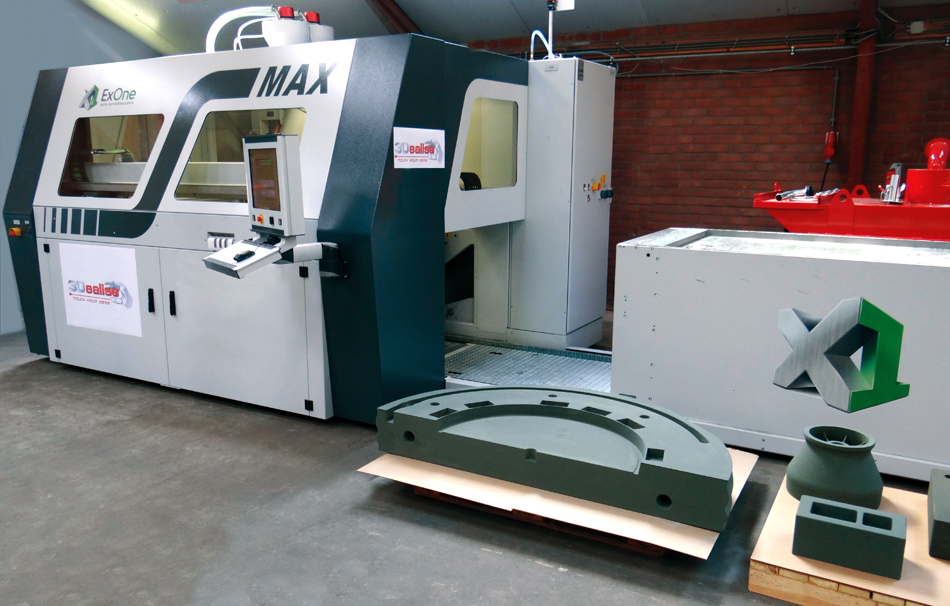Did you know that the S-Max 3D sand printer from ExOne is capable of producing prints as big as one of those old timey British phonebooths? With a build volume of 1800 x 1000 x 700 mm, the S-Max may not be the largest sand 3D printer on the market (the vx4000 from voxeljet has a build volume of a little more than twice the size), but it is certainly large and fast. And London-based 3Dealise Ltd. has just had one installed in their 3D printing and engineering service bureau, where they’ve already used it to reproduce a cylinder on a 1912 Brush car for a UK customer.
Sand printing is used to create complex moulds from which to create metal castings, bypassing the middleman of making a casting pattern. This is particularly useful for small production runs and producing metal prototypes. And with the large S-Max, those prototypes can be particularly large or, in the case of 3Dealise’s first use of their S-Max, multiple parts can be fabricated all at once.

Without any casting patterns or blueprints, 3Dealise used their new S-Max machine to repair the damaged cylinder of a 1912 Brush car in just two weeks. By performing a scan of the original cylinder, the firm was able to create a CAD model and add the needed repairs. 3Dealise next printed out the sand mould, together with a number of separate print jobs for other orders. The mould was coated, placed in a mould box, and cast in metal the same way traditional casting is performed. With some post-processing, the firm was able to create a totally new cylinder for a car more than one hundred years old. The complete process can be seen in the video below:
Roland Stapper, CEO of 3Dealise, said of 3D printing, “This new technology is important for two reasons: First, the success of UK manufacturing depends on the ability to quickly innovate and turn ideas into prototypes and then products. By enabling clients to go directly from a computer design to a high quality and high precision prototype, we can speed up the prototype cycle, which can give UK manufacturers a real edge. Second, there is a major trend away from mass production and towards customised products designed to meet specific needs. 3D printing is particularly well suited to produce customised products because every print can be different. Local UK production is crucial to this concept, because shipping time must be minimised. ”
They may not be producing an old timey London phonebooth, yet, but with the 3D scanning and reverse engineering capabilities demonstrated in making the Brush car cylinder, we’re likely to see 3Dealise continuing to 3D print impressive stuff in the near future.


